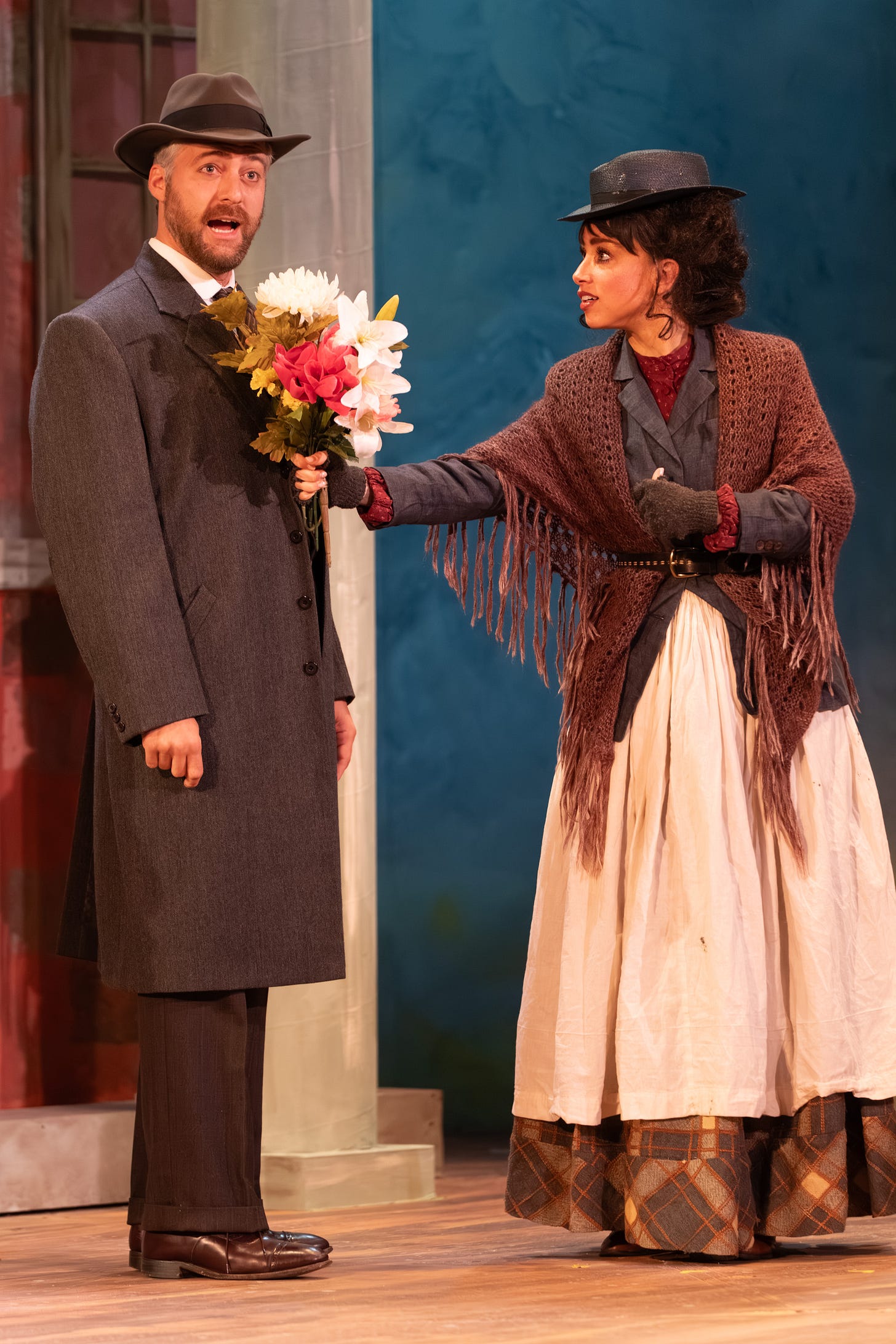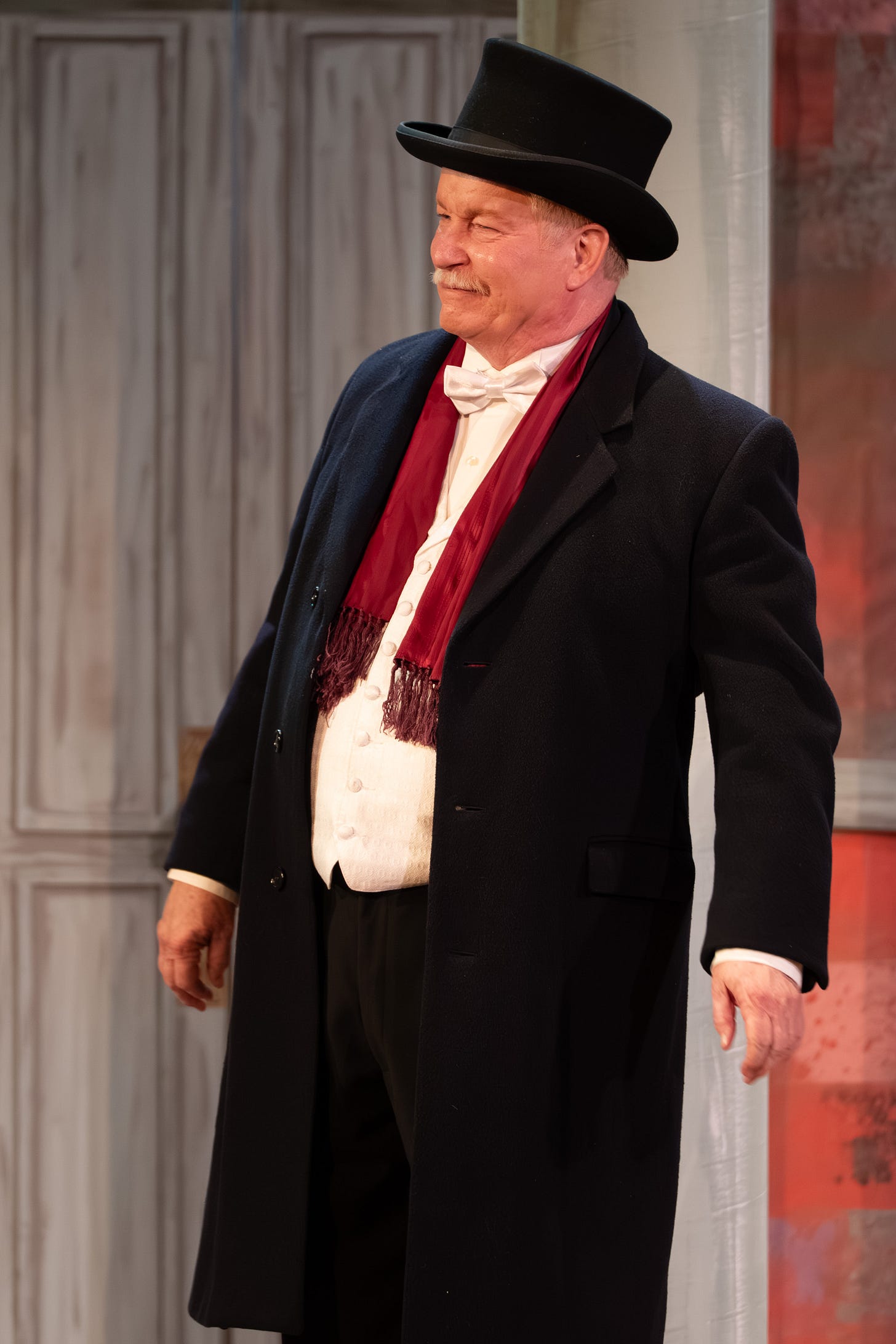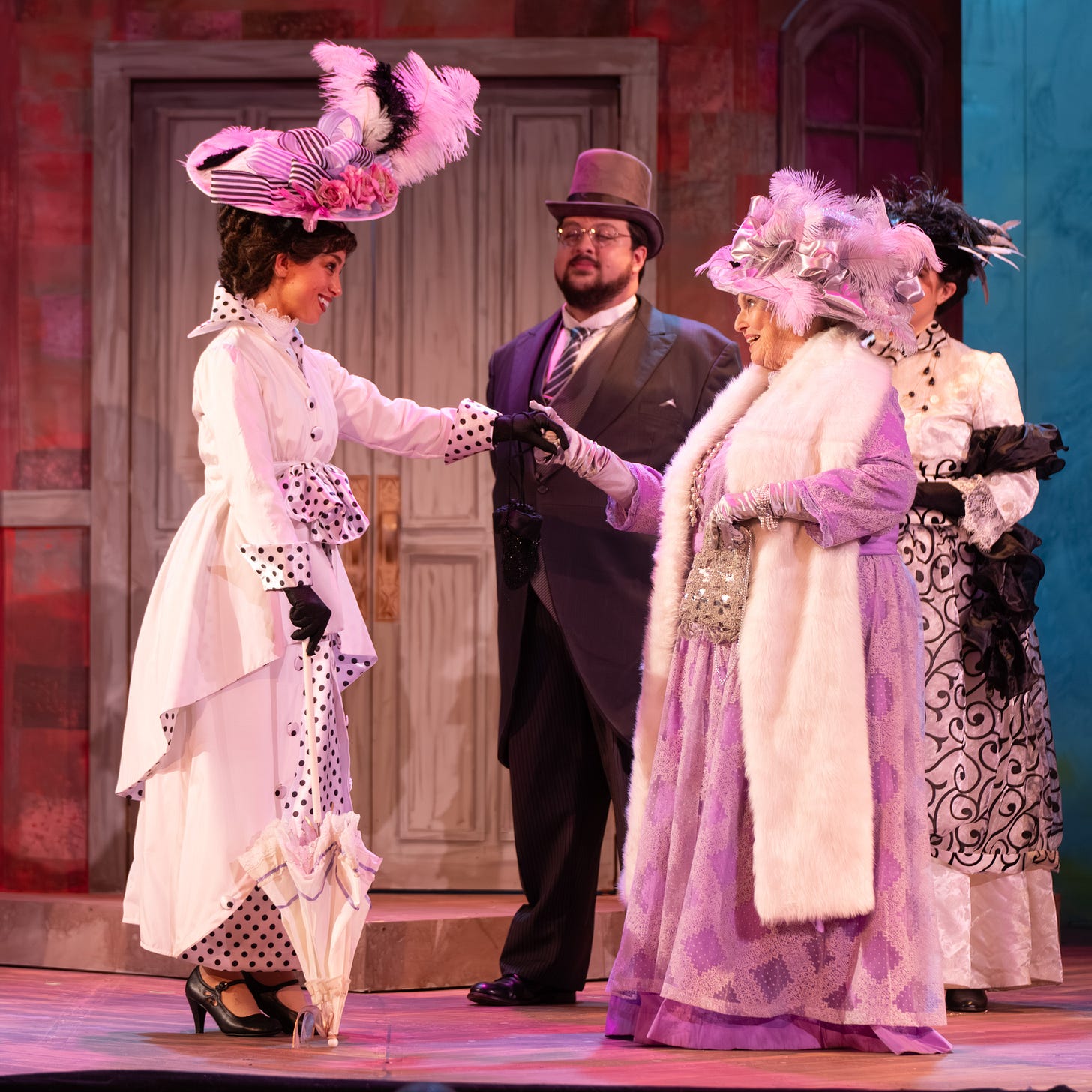Through July 12: Union Avenue Opera's "My Fair Lady" is Largely Loverly
The show isn't a good match for UAO, but succeeds anyway.

It has been at least a decade since opera companies began adding traditional musical theatre fare to their seasons. Union Avenue Opera has been doing it off and on since 2013. Their latest foray into Broadway territory is an entertaining if somewhat flawed production of Lerner and Lowe’s 1956 hit (2,7171 performances) My Fair Lady.
The plot of My Fair Lady (MFL from here on) dates back to the year 8 CE when Ovid included in his Metamorphoses the tale of the sculptor Pygmalion. Disgusted by what he sees as the moral failings of women, Pygmalion resolves to remain single and concentrate on his art. But then he creates a statue of a woman so beautiful that he falls in love with it, moving Aphrodite to bring the statue to life—thus making him reconsider his position.
The story has inspired innumerable works of art over the centuries, including George Bernard Shaw’s 1913 comedy Pygmalion. His Pygmalion is Henry Higgins, a linguistics professor who bets his friend Colonel Pickering that he can pass the Cockney flower-seller Eliza Doolittle off as a princess by teaching her to speak and act like a lady. In the end he, too, becomes enamored of his creation, only to discover that Eliza has acquired not just the manners of a princess but the steely determination of a queen. She walks out on him, even if he’s still too self-involved to realize it.
In the process of adapting Shaw’s play for the musical stage, Alan Jay Lerner paired down the original script and inserted songs in the appropriate places but otherwise left the much of the dialog intact. He did, however, add a happy ending in which Higgins realizes how much he cares for Eliza and the two reconcile.
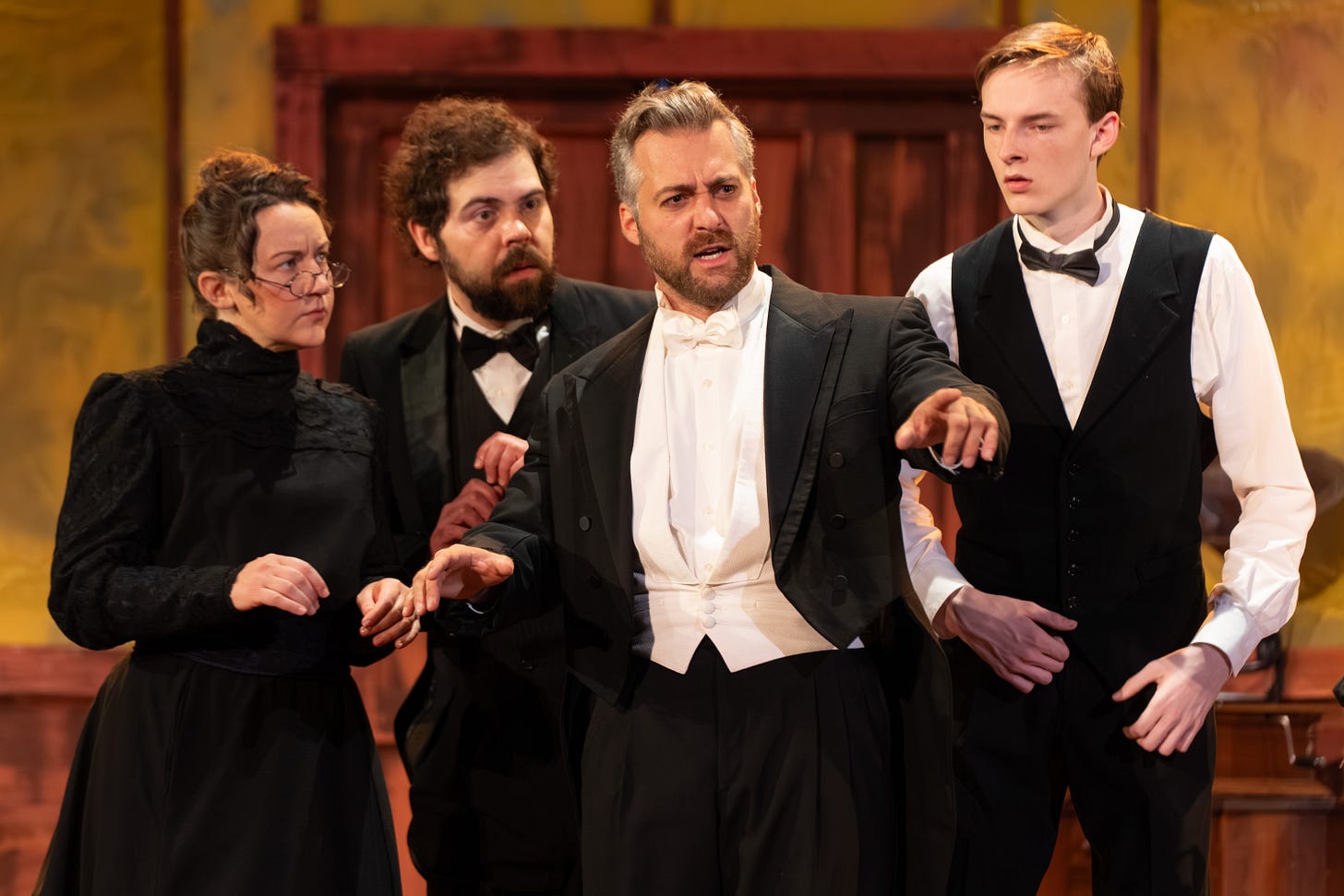
In order for MFL to work at all, it needs strong singing actors in the roles of Eliza and Higgins. UAO, I’m happy to report, has the stunning Brooklyn Snow in the role of Eliza and, in his UAO debut, Trevor Martin as Higgins.
Martin, whose musical theatre credits are impressive, brings a bit of humanity to Higgins without losing the character’s insufferable self-esteem. His performance of “I’ve Grown Accustomed to Her Face” has just enough vulnerability and regret to make the reconciliation scene credible to a contemporary audience. Snow once again shows that perfect combination of vocal beauty and acting skill that has been impressing local audiences since her debut in UAO’s Candide in 2019. Her transition from “squashed cabbage” to “a consort battleship” is completely convincing.
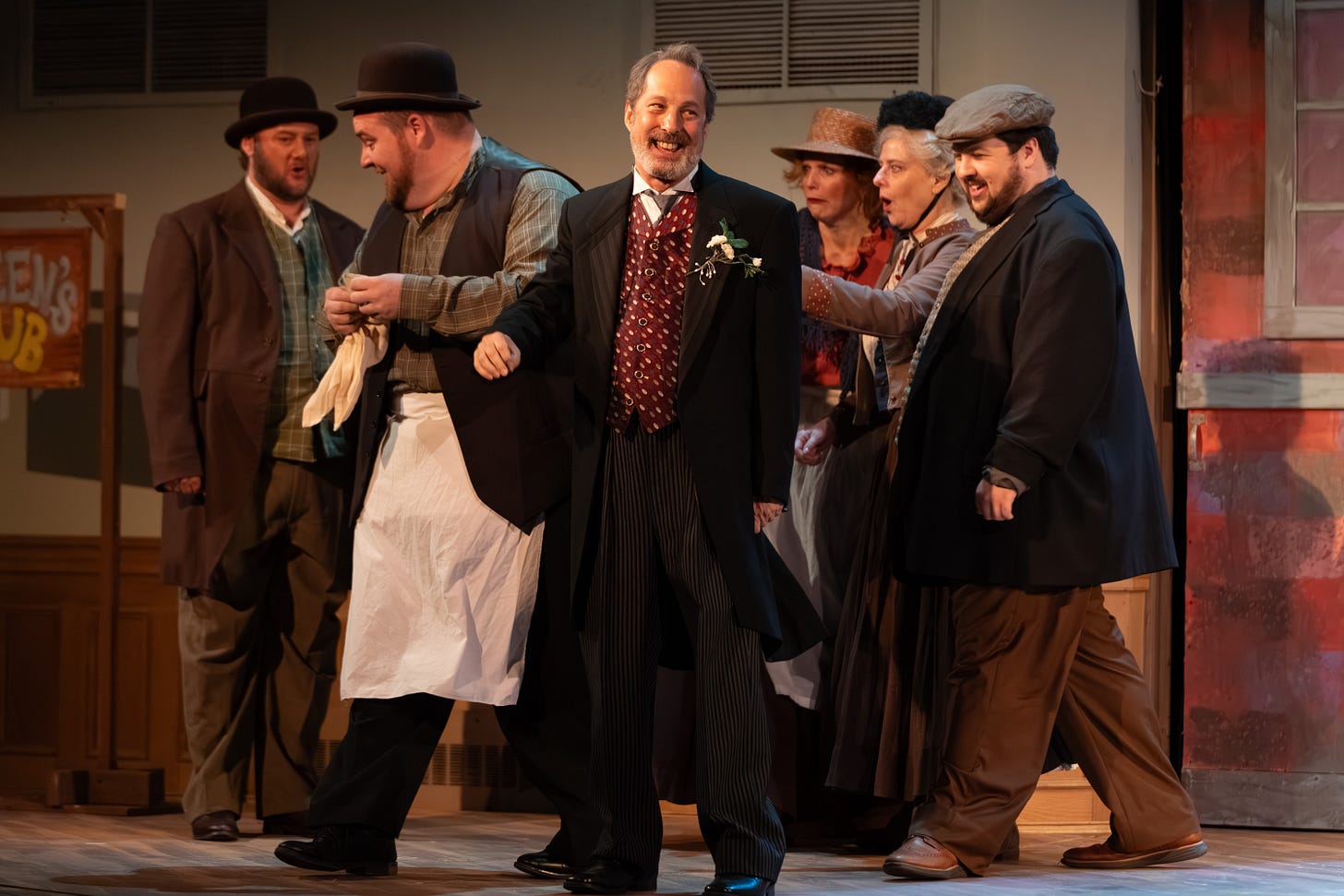
Paul Houghtaling is certainly diverting as he revels in the shameless amorality of Eliza’s father Alfie in “With a Little Bit of Luck” and “Get Me to the Church on Time,” even if he lacks the larger-than-life, English music hall persona that’s baked into the role. I would also have liked to have seen a bit more self-awareness in his character, especially in his exchanges with Higgins. Without that, Alfie skates dangerously close to sociopath territory.
Steve Isom’s portrayal of Pickering is the first one I have seen that had enough variety and nuance to make him truly interesting. It’s easy for the character either to turn into a Nigel Bruce parody or fade into the scenery. Isom makes him positively endearing.
Higgins’s housekeeper Mrs. Pearce is another character who can be a bit one dimensional. Jennifer Theby-Quinn, a fine singer as well as comic actor, gives her the kind of depth that makes her memorable.
Higgins’s acerbic mother is one of those parts that is a “License to Kill” for an actress d'un certain âge and Donna Weinsting is just the person to do that. She delivers Shaw’s arch comments with just the right mix of venom and drollery.
Charles Calotta has a ringing tenor and charming insouciance as Freddy Eynsford-Hill. His one and only song, the evergreen “On the Street Where You Live,” is beautifully done. Indeed, all the musical numbers went quite well on opening night, despite occasional moments when a singer got slightly ahead of or behind the beat. Part of the problem there might have been Conductor Scott Schoonover’s tempos, which were consistently on the fast side and didn’t always serve Lerner’s witty lyrics well. Applause for the orchestra for playing it all with such admirable precision.
Speaking of the musical numbers, here’s a laurel wreath (they’ll have to share) for the ensemble. UAO’s chorus always sounds great, but I was especially taken with the Cockney quartet that accompanies Eliza in “Wouldn’t It Be Loverly.” The a cappella opening is sung so smoothly by Zion Thomas, Joel Rogier, Michael Curdt, and Philip Touchette that it’s easy to forget how difficult it is. Touchette also has a nice comic cameo as former Higgins pupil Zoltan Karpathy, “who uses the science of speech / More to blackmail and swindle than to teach.”
Karpathy shows up in the embassy ball scene, in which Eliza convinces everyone that she is indeed a lady. The “Embassy Waltz” sequence that opens the scene features simple and elegant choreography by Christine Knoblauch-O’Neal, who also provides the stately movement for the “Ascot Gavotte” number earlier in the act. It’s very much to Knoblauch-O’Neal’s credit that she has come up with steps that the non-dancing cast can execute gracefully.
This bring us to one of the problems MFL poses for a small opera company like Union Avenue. The small stage at the Union Avenue Christian Church is ill suited to the dance-based production numbers that were de riguer over 50 years ago. In addition, opera singers, unlike their theatrical equivalents, are not usually trained in movement and dance. When it’s time for the big dance number the singers cede the stage to the corps de ballet. A company with a big budget and a house to match can do that. UAO doesn’t have those kinds of resources.
A more fundamental issue, though, is that My Fair Lady is simply not operatic. With the possible exception of Eliza and Freddy, there are no roles for the kind of classically trained voices that UAO consistently engages. This is a show that is all about speech and the way it can both unite and divide people; Shaw makes that clear in his play’s preface. The story is advanced (and the author’s ideas are put forth) almost entirely in dialog rather than song. And the acoustics in the church’s performance space are not friendly to the spoken word.
This is, in sum, a show that plays to few of UAO’s strengths while highlighting the weaknesses of its venue. I love My Fair Lady, and I enjoyed this production well enough, but I also thought that much of Shaw’s highly literate humor simply didn’t come through. It’s no accident, in my view, that UAO’s more successful musical theatre productions have been shows like Sondheim’s A Little Night Music and Ahrens and Flaherty’s Ragtime, in which music is an integral element rather than an add-on.
Still, this is a good-looking production thanks to Teresa Doggett’s period costumes, which underline social class divisions by draping the Upper Crust mostly in white and the Cockneys in earth tones. Patrice J. Nelms’s set consists of three reversible units on trucks (wheeled platforms) which, while visually satisfying, are cumbersome to manage during the many scene changes. The show nevertheless moves along well under Annamaria Pileggi’s skilled direction.
On balance, then, this is a decent My Fair Lady, and my quibbles notwithstanding, it was a pleasure to see. If you enjoy the show, I don’t think you can go wrong here. And for those who have not had the pleasure of Eliza Doolittle and Henry Higgins’s company before, it’s a good introduction to the wit and wisdom of this script.
Union Avenue Opera’s production of My Fair Lady runs through Saturday, July 12th, at the Union Avenue Christian Church in the Central West End. For more information, visit the company’s web site, which also tells the inspiring story of the church’s miraculously quick recovery from the damaging tornado of May 16th.




